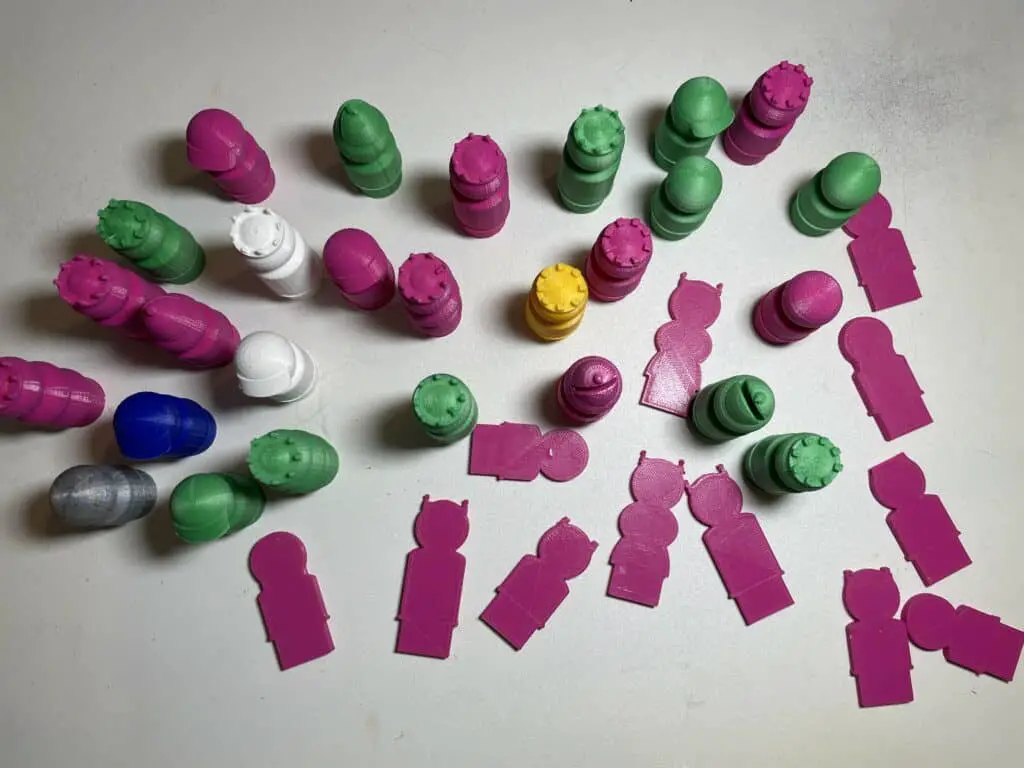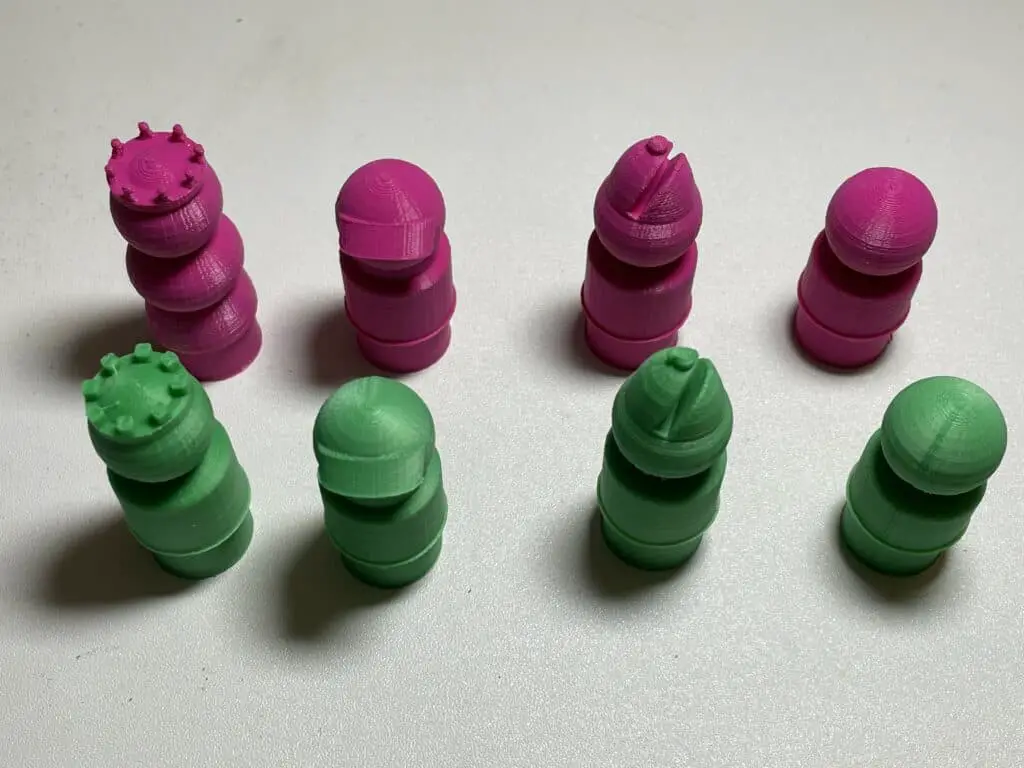In a recent TikTok, Howie Hua (who trains future teachers in math) declared grouping and regrouping to be “one of the most important topics in elementary math.” I would go so far as to say it is the very essence and foundation of elementary mathematics, thus the building blocks of all other math.
Grouping and regrouping are the processes of combining and recombining items in ways that make it either easier or more useful to use, interpret, or communicate how many there are.
Writing numbers in our number system is the process of grouping items into groups of sizes equal to powers of ten. Addition is taking two or more groups and regrouping them together as one group. Subtraction is the process of splitting a group into two groups. Multiplication measures how many we have if we have a certain number of identically-sized groups, and division tells us how many of those identically-sized groups we can make out of some total amount.
I go into more detail on these ideas, as well as begin to extend this into algebra, below. Keep reading!
Counting – The Original Mathematical Grouping
Believe it or not, early humans may not have counted. At some point in human history, it became important for farmers, merchants, parents, and workers of all types to move beyond knowing that they had a “lot” of sheep, coins, children, or other items and instead to be able to specify with more precision the actual number of seeds, spices, toys, or whatever the case may be.
When my niece was quite young my mother-in-law once counted the number of Fisher Price Little People in my niece’s collection. She then proceeded to tell my niece’s mom how many there were. In that moment, the Little People in this set became not just a single jumbled group of toys to my sister-in-law, but rather individual items that must be sought out in their smaller groups or even one-by-one until they were all found at the end of the day. The mother’s peace of having cleaned up was never again assured until all of the Little People were found. You see, initially, the mother only saw the large group of them and was content to end with a similarly-but-perhaps-not-precisely large group at the end of the day. But once she knew how many there were, she started seeing them as smaller groups, including groups of size 1, that needed to total a certain number at the end of cleanup. When we begin to count items, our perspective shifts from seeing one group to seeing the smaller groups that shift, flow, interact, and regroup to make up the larger group.

Our Number System is Built on Grouping
When communicating numbers, we use a place value system based on the powers of ten. In a place value system, there is a limited number of symbols that represent counting. Because we base our system in 10 (the decimal system, where “deci” means “ten”), we have ten different symbols: 0, 1, 2, 3, 4, 5, 6, 7, 8, and 9. We know groups can be bigger than 9, so we need a way to represent numbers larger than our largest symbol. (Can you imagine if we needed to remember hundreds of completely different symbols to represent numbers?!) This is where place value comes in. In our place value system, we determine how many complete groups of different sizes we can make. Can we make complete groups of 100 items? Of 1,000 items? Of 10,000 items? If so, how many? Let’s consider, for example, the number 7,256. This number tells us that we have 7 groups of 1,000; then with what’s left we can make 2 complete groups of 100; if we break the remaining up into groups of 10, we get 5 groups of 10 and some leftover; and the leftovers are actually 6 singletons, or 6 groups of 1. Thus, inherent in our number system is a means of regrouping a larger group into groups of 1, 10, 100, 1000, 10000, etc.
Addition and Subtraction as Grouping and Regrouping
Addition is simply an extension of counting. If I have a group of 2 items and a group of 3 items, and I want to combine them, then I can add 2+3 to know that my new group — the result of regrouping — is size 5. In reverse, subtraction represents the process of regrouping the larger group by taking a small group (a subset) away and counting how many are left. This perspective can help us recognize when addition is the correct operation in application problems and can help us understand common units, a precursor to fractions. Here’s what I mean by common units: If we add two numbers, to get a meaningful result, the items they represent have to be related in some way. I could take 14 Little People from my house to my mother-in-law’s and add them to her 23 Little People so she has a total of 37 Little People, for example. Students could combine their 4 carrots and 3 apples at lunch to be 7 items of food (but not 7 carrots nor 7 apples!). You could say that 45 seconds and 3 minutes combine to make 3-minutes-and-45-seconds, or 3.75 minutes, or 225 seconds. But if you combined 45 thoughts and 3 paperclips, what exactly would you have 48 of? When it doesn’t make sense to group and regroup the items we’re counting, it also doesn’t make sense to add or subtract them.
It’s worth mentioning here, too, that what we used to call “carrying the one” or “borrowing” when we do multi-digit addition or subtraction is now called regrouping precisely because our number system was ultimately built on this idea of grouping. I’ve written a blog post specifically about this.
Multiplication and Division as Groups of Identical Size
The main models of multiplication (and division) taught in the elementary grades these days all ultimately come back to this interpretation: multiplication represents a given number of groups of a given size. It might be easiest to see this using an array illustration, so let’s pull out the knockoff Little People (ie, 3D-printed chess pieces) again.

In the image, we see 8 figures. We can count them as individuals and get 8. But eventually, we start to see 2 rows of 4 or 4 columns of 2. These lead us to the two multiplication problems of 2 x 4 or 4 x 2. In one case, we have grouped these 8 figures into 2 groups of 4 (probably by color). In the other case, we have regrouped these 8 figures into 4 groups of 2 (probably by head gear).
Further, like the addition and subtraction algorithms, we use the underlying groupingness of our number system when we perform the traditional algorithms of multiplication and division with larger numbers. Any time we “carry” in multiplication, we are regrouping some quantity of one place value into groups of the next larger place value. Any time we perform the subtraction step in the long division algorithm, we are essentially regrouping the leftovers from one place value with the “bring down” quantity from the next lower place value.
Grouping and Regrouping in Fractions and Algebra
The power of this basis of grouping and regrouping really begins to show when we start moving into more and more abstract levels of mathematics and pattern-making. Fractions can be visualized as portions of a group, leading to more intuitive discovery of how to add, subtract, multiply, and divide them. Grouping and regrouping become central themes in performing operations on mixed numbers and decimals. Finding like denominators becomes a process of regrouping, or perhaps simply restyling the groups. The properties of operations, such as distributive and commutative properties, become the automatic results of the inherent grouping-ness of the operations. In algebra, combining like terms and factoring (especially factoring out numeric GCFs) are some of the more immediate ways that grouping shows up. This is just a small taste of what these ideas of grouping and regrouping can empower your students to understand in their math future. If you’d like to see future blog posts that dig deeper into these, let me know.
And a reminder, as always:
You’ve Got This!
